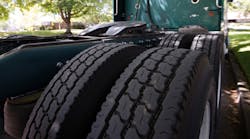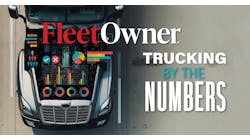We live in an increasingly automated, push-button world. The pandemic accelerated the age of convenience, where all you need is a cell signal and sufficient battery strength.
My niece works for the local chain supermarket as a professional shopper while on college break. It’s a simple job. Customers send in their online orders, and she fills them. Being diligent, she developed quite a following because her customers knew she would get them everything on the list. If you consistently deliver and make it easy for the customer, they’ll keep returning.
Truck tire and retread service is a lot like the professional grocery shopper because there are always slight variations in the order that can majorly impact operations. The need for tires never stops as long as trucks are moving, so there must be a steady supply of steer, drive, and trailer treads in the correct sizes. Companies that consistently get the orders right have a much better chance of developing a sustainable long-term relationship.
One area where every commercial tire dealer and retreader struggles is the same area where fleets struggle: labor. Saying it’s hard to find good help is an understatement of all understatements in many industries. Labor often requires effort, and in the truck tire business, that effort will be physical. When it rains, technicians can count on getting wet, and when that rain is cold enough to turn to ice, sleet, or snow, they will be cold and wet. It’s a tough job for tough people.
The retread plant is no picnic, either. While it may be quite balmy in the winter, summers are guaranteed to be in the triple digits daily for much of the country. Heat plays a major role in curing retreads, so it’s a constant in the plant, and the hotter, the better. Throw in the noise from repair tools and other equipment, and you often have an uncomfortable workplace—another tough job for tough people.
Retreading has been on the automation bandwagon for decades. Craftsmanship has been replaced by laser alignment and computer chips. Non-destructive inspection equipment can identify any internal separations in a casing, so it never gets past that stage in the process. Buffers are programmed to deliver the exact diameter on each casing, so there is little to no variation in dual applications. Builders match the splice on precure treads and align it perfectly so there is no lateral runout in the tread. However, the human element is still necessary because there are certain steps in the process that are just too costly to automate.
See also: Clark: Impact of tires on fuel economy and operating costs
On the other side of that coin, commercial truck tire service has been slower to adapt to technology that makes the process easier. One area where the industry can embrace the reduction in effort is demounting and mounting. Tire-changing machines are the solution to reducing the amount of effort for demounting and mounting tires, especially wide-base assemblies. In the right hands, they can almost effortlessly complete the task without damaging the tire or the rim. In the wrong hands, large sections of bead rubber will be damaged or lost, resulting in more scrap tires and fewer retreadable casings. Even the most advanced tire machine still needs the skills only a human can provide.
Truck tire and wheel service is a tough job, and more companies are looking for ways to improve performance while making it easier. Service providers who embrace that approach are more likely to hire and retain quality technicians. Tire guys tend to move around, so Company A, which has new trucks, tire machines, and sound equipment, will be more attractive to the technician at Company B, that does everything by hand with marginal tools, equipment, and trucks. Dealers will have to keep raising their game to maintain a quality workforce.
Fleets need sustainable truck tire and retread vendors. Technology will play a role in determining which companies will be able to adapt to the next generation of workers and which ones will not. Old-school methods and tools cannot be expected to continue delivering the service that fleets expect as worker expectations evolve. The people tough enough to do the job will take a tough job in another industry because technology makes it easier, which means the fleets will just have to accept whatever they get.



